Josh Hart: Hart and Soul of the New York Knicks
By Gabriel Adorable | May 22, 2025
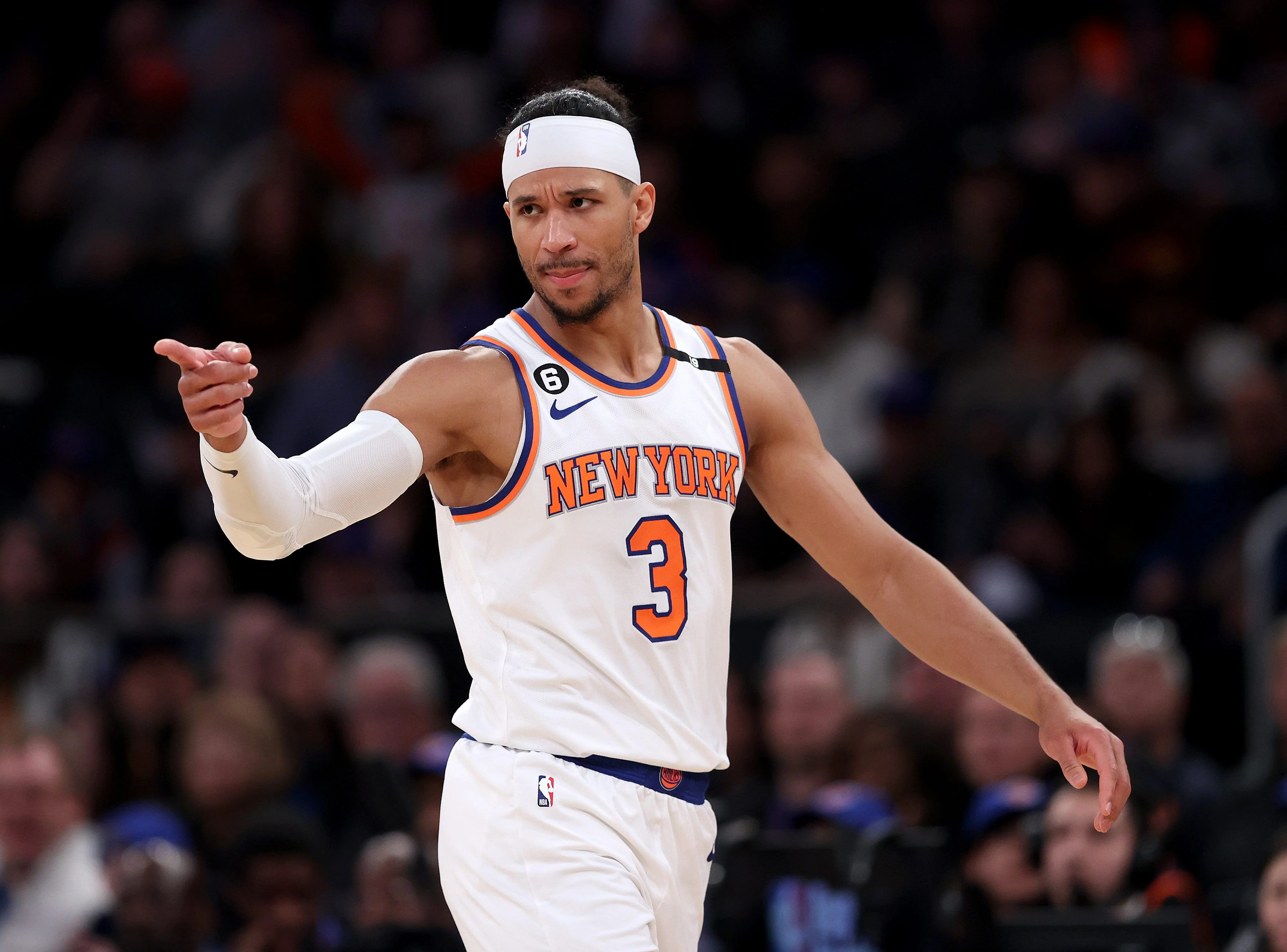
When playing public runs, people often like to draw comparisons between themselves and their NBA counterparts. Some people say they play like Kyrie Irving, others may say they play like Klay Thompson, but one of my friends had an interesting player comparison for me: Josh Hart. This took me aback, as I had never heard anyone, let alone myself, having their game and skillset compared to the Knicks guard/forward. Then I took a step back and realized he was right. Getting rebounds, playing defense, hustling, and shooting textbook shots are how I prefer to play basketball, and no other player in the NBA exemplifies that archetype like Joshua Hart.
In the modern NBA, the game is defined by superstars. Players like LeBron James, Nikola Jokic, and Shai Gilgeous-Alexander make the headlines dropping triple-doubles and leading their teams to wins on a nightly basis. Despite this, certain players contribute to wins for their team at similar levels while receiving fractions of the attention that such stars get.
The player who encapsulates this sentiment best is the “superstar role player,” Josh Hart. While the stars control the offense and dictate the flow of the game, players such as Hart lurk in the shadows, doing all the little things that have an extremely large impact on his team and the game. Players like Hart aren’t plug-and-play superstars that flip 20-win teams to championship contenders, but instead possess their value as glue guys that bring their teams together.
High Minutes, Low Usage
.png)
Josh Hart logs some of the heaviest play time in the entire league, averaging almost 38 minutes a game this season, a number usually reserved for ball-dominant superstars. Yet his usage rate, which estimates the percentage of possessions a player uses while on the floor by summing up shots, free throw attempts, and turnovers, remains at a measly 15%.
To put this in perspective, players with similar minutes played per game usually have usage rates in the 30s and above. Compared to players like Nikola Jokic, Anthony Edwards, and Jayson Tatum, our favorite Villanova graduate, Hart, has half the usage rate.
Why does Hart remain on the floor for so long despite not being the primary initiator of the offense? To put it simply, his hustle and versatility allow him to win games for his team without putting up flashy traditional box score numbers to the same effect as his high-usage peers.
Win, Win, Win
.png)
To fully encapsulate Hart’s winning impact, we use the cumulative version of an advanced metric known as LEBRON (Luck-adjusted Estimate using a Box prior Regularized ON-off), which provides a more nuanced view of player impact on a team’s performance while accounting for time played. Though complex, the cumulative version essentially encapsulates how much better a player is than an average per 100 possessions played, introduces total time played into the equation, and translates that figure into an added wins estimate.
Hart comes in with a LEBRON War in the high 5s and low 6s, which places him in similar breadths as superstars like Steph Curry, Kevin Durant, and Damian Lillard. Hart doesn’t need the ball to provide much of his on-court impact, which is precisely what makes him so valuable.
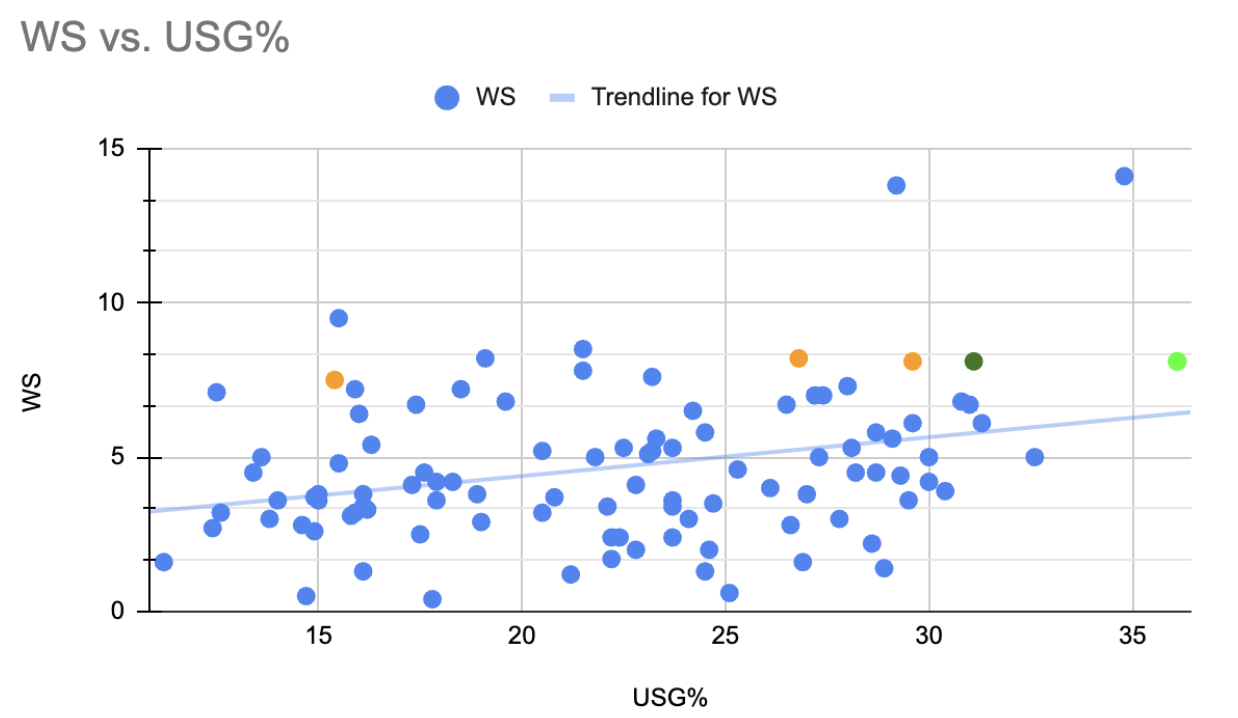
Even older metrics such as Win Shares (WS) show the same story. Although archaic at this point, WS still does a decent job at quantifying how much a player impacts the games while they are on the floor. The orange dot on the left represents Hart, with the other two orange dots representing his Knicks teammates Karl-Anthony Towns and Jalen Brunson. The dark and light green dots represent Giannis Antetokounmpo and Jayson Tatum, respectively.
Once again, the same story upholds: with half the usage rate, Josh Hart provides similar WS and, in turn, impact on the game as his superstar coworkers.
Defying Verticality
.png)
While being 6'4” isn’t considered short by most metrics, in NBA standards, it stands as slightly below average. Despite this below-average height and rebounding being traditionally dominated by big men, Josh Hart ranks as one of the NBA’s top rebounders, often out-rebounding players over 6 inches taller than him.
How is he so effective on the glass? Pure effort and hustle. Although extremely difficult to quantify, simply viewing his performance on the court shows a superior position, timing, and nose for the ball that not every player has. This allows the Knicks to secure extra possessions, which are critical in close games against playoff-caliber opponents.
“I'm a guy that's gonna do the dirty work. Going to rebound, going to defend. Get on the floor for a loose ball and do those kinds of things.” - Josh Hart.
Boring, But Effective
When describing Hart as a player, it’s less about what he does, more about what he doesn't do. In a Knicks team loaded with talent, Hart ends up filling in the gaps of the offense and executes the boring stuff. He gets to the rim off assists, he gets rebounds and hustle plays, and gets those hockey (second) assists.
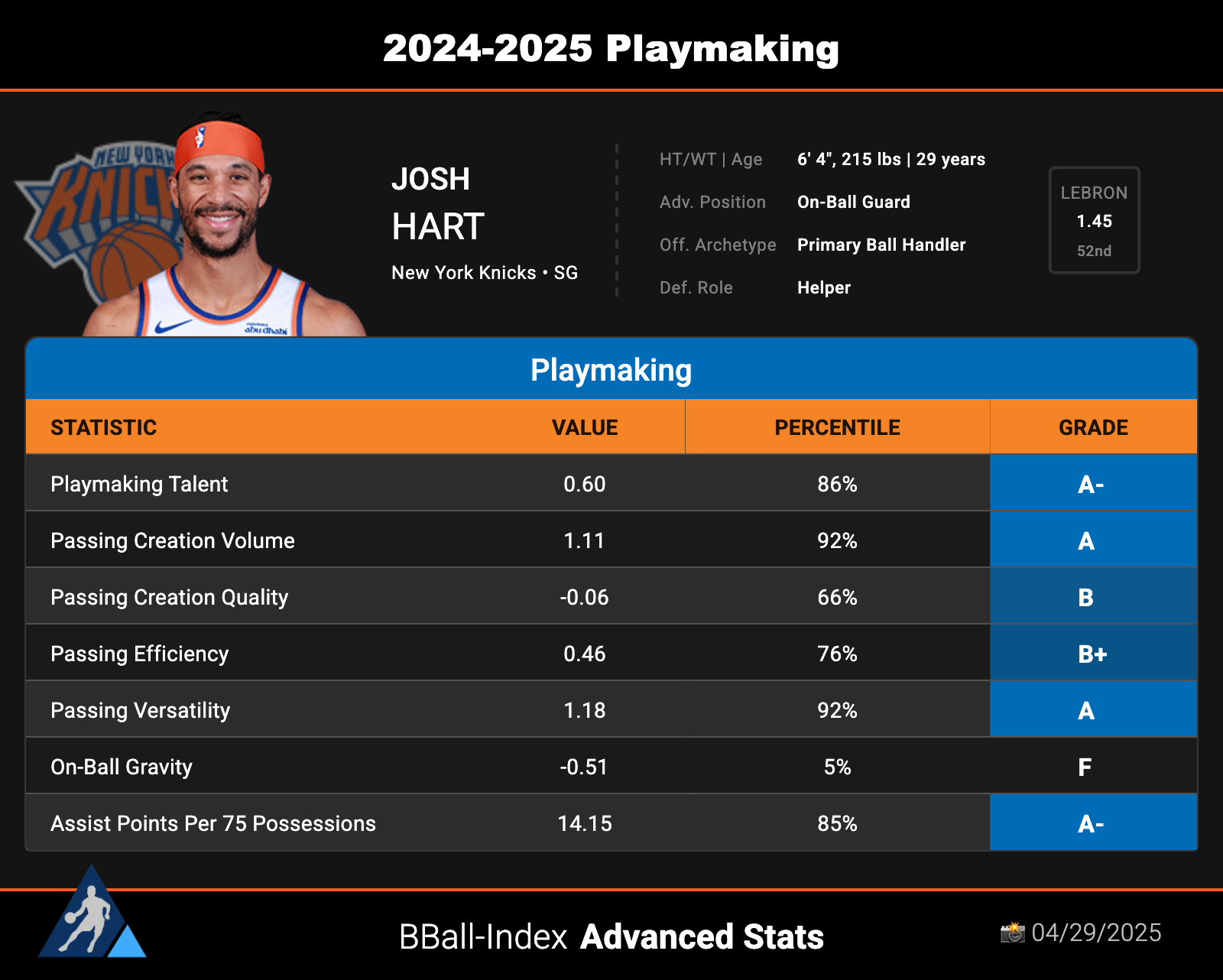
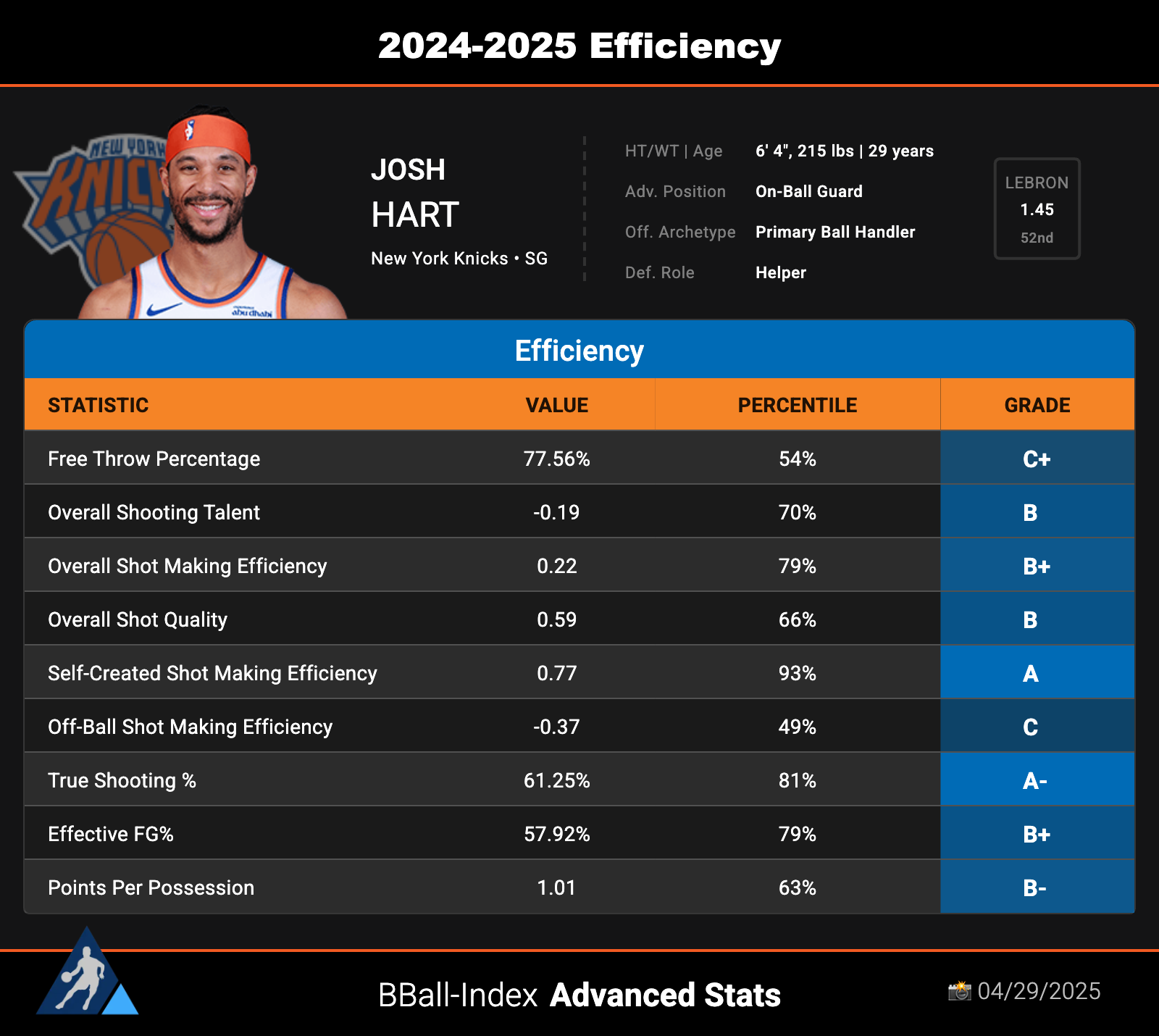
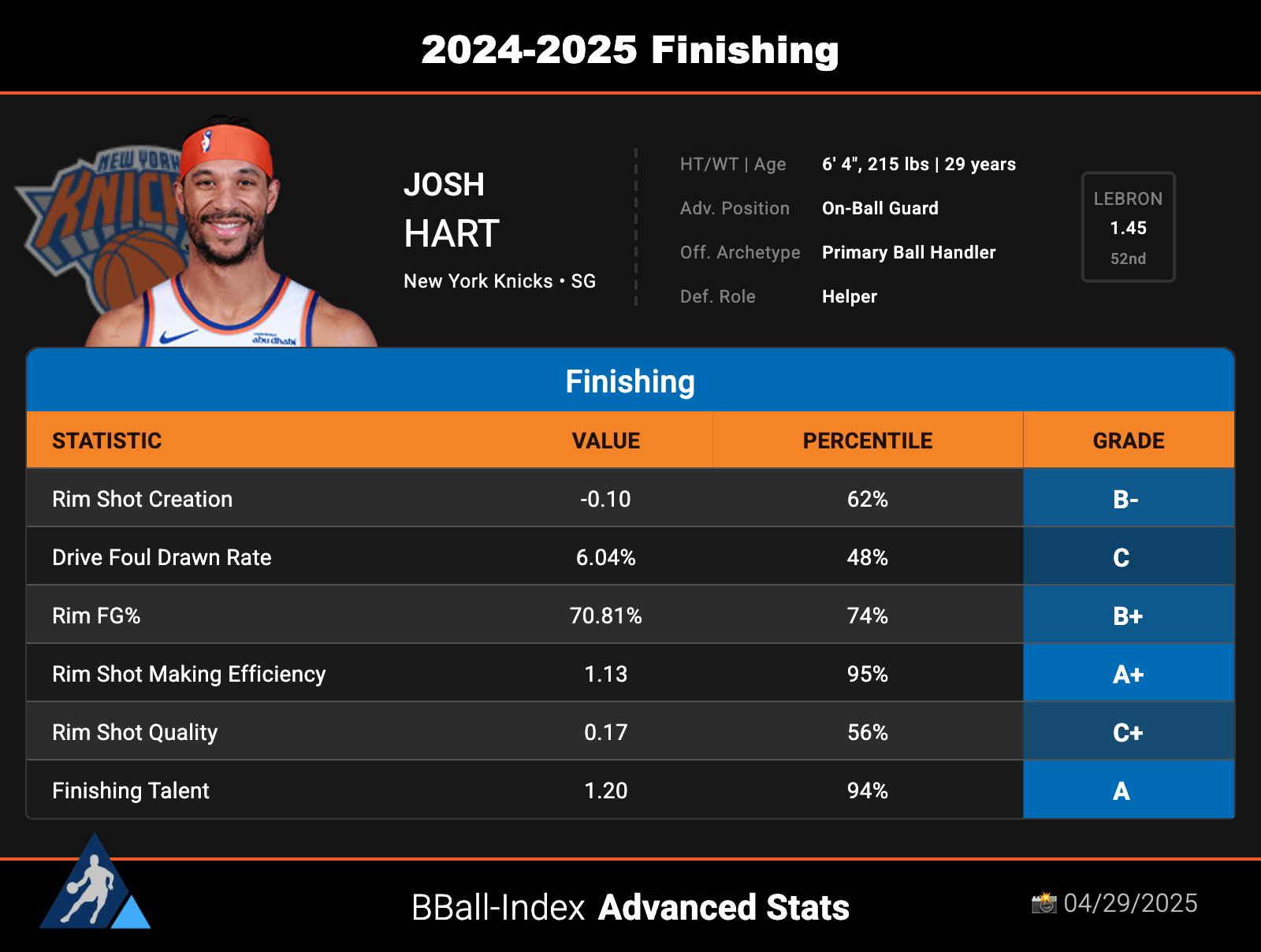
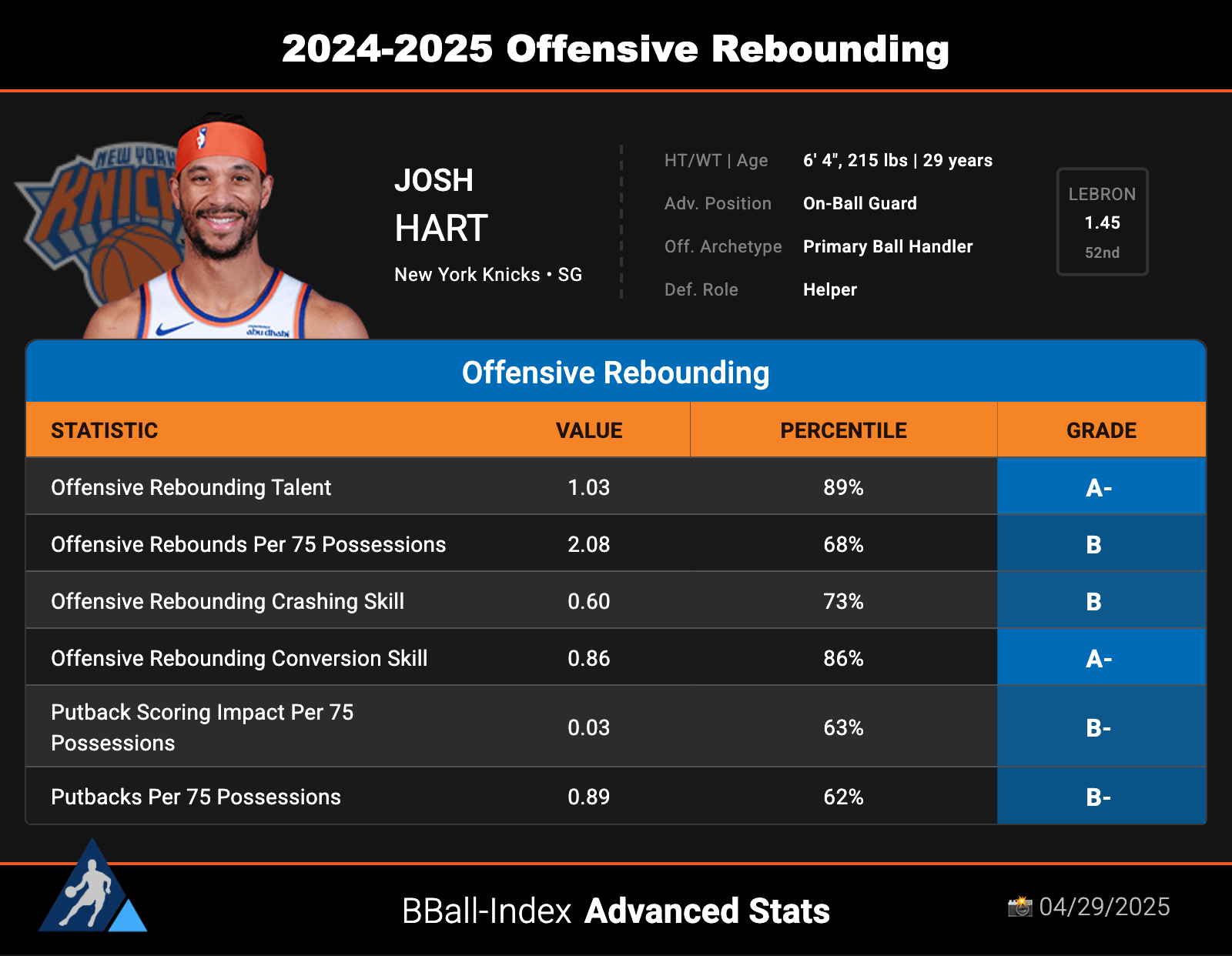
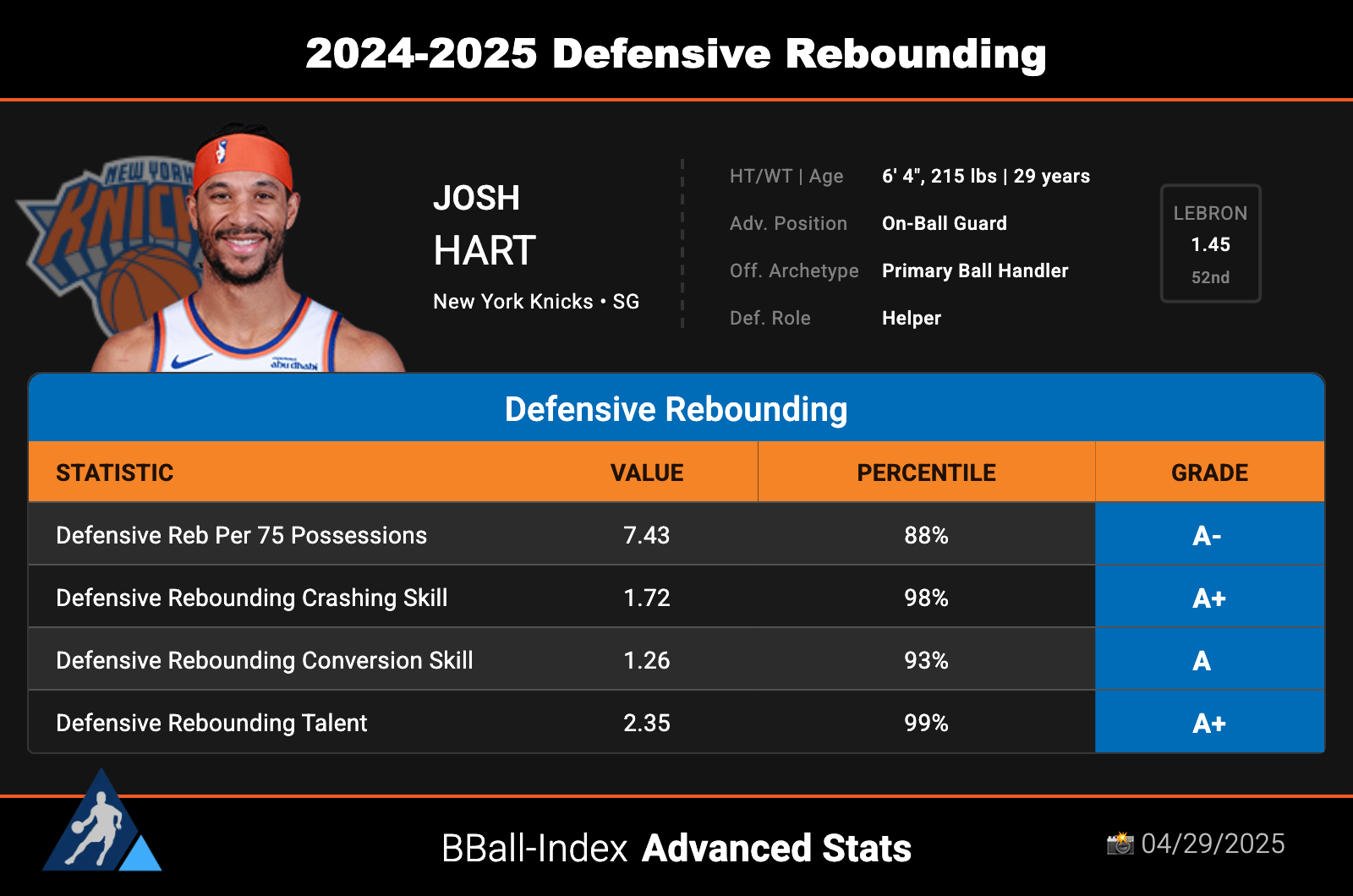
.jpg)
What does this mean? The parts of the game that he excels at are often overlooked, but without them, the team falls apart. Ranked against all other starters, Hart is in the 90+ percentile for the following categories: defensive rebounding, shot quality, off-ball shot quality, handoff shot quality, and overall shot quality. These are not flashy plays nor stats that the audience may see, but Hart provides balance and unity to the Knicks unit by executing his role. He doesn’t take over by scoring 30 points a night, but instead does so by doing the hard-nosed, unglamorous work: executing pick and rolls, handoffs, and taking high-quality shots at the rim.
Without players like Josh Hart, a team can feel disjointed and incohesive, much like a song without its bassline. You may not notice it, but the second it’s gone, the whole piece falls apart. Hart’s value lies in these subtle contributions and thus anchors the Knicks as a whole.
The Superstar Role Player: Conclusion
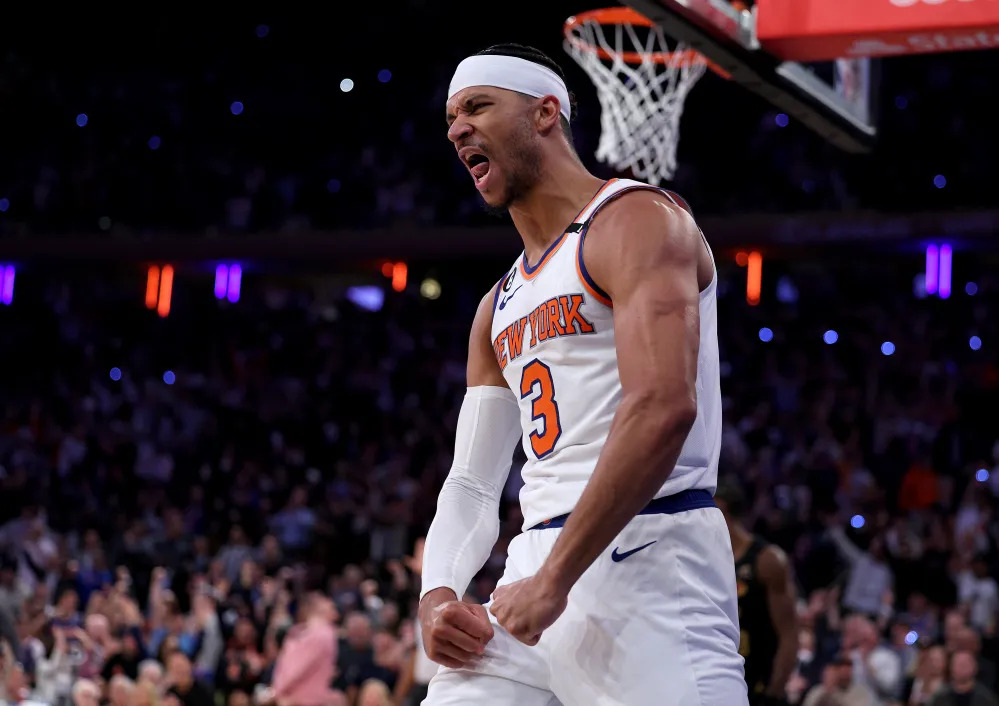
Josh Hart may not be the first name brought up when discussing the most important players in the league, but his impact is undeniable. Every championship team has players like him: unselfish competitors who thrive without large stat sheet contributions and want nothing but to put their teams in the position to win.
In the age where the flashiest stars dominate social media and headlines, Hart’s game is a reminder that the most effective ballers don’t just create highlights; they make winning contributions. On his own, Hart wouldn’t be able to lead a team to the playoffs like a superstar, but by maximizing his value as a role player and quality starter, he provides a similar impact to his star contemporaries. Hart’s consistent effort and emphasis on doing all the little things on the court act as the glue that keeps the Knicks afloat.

